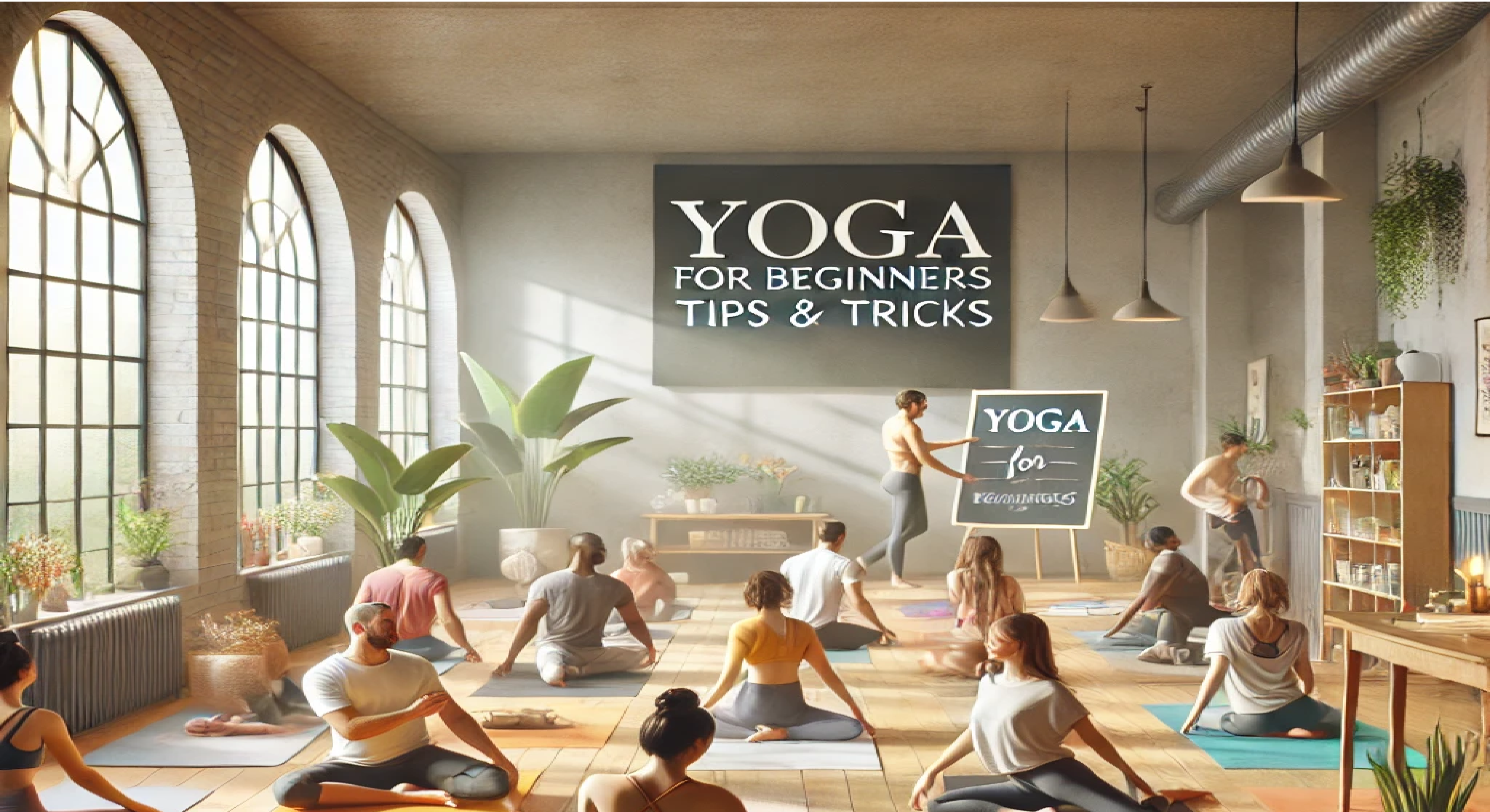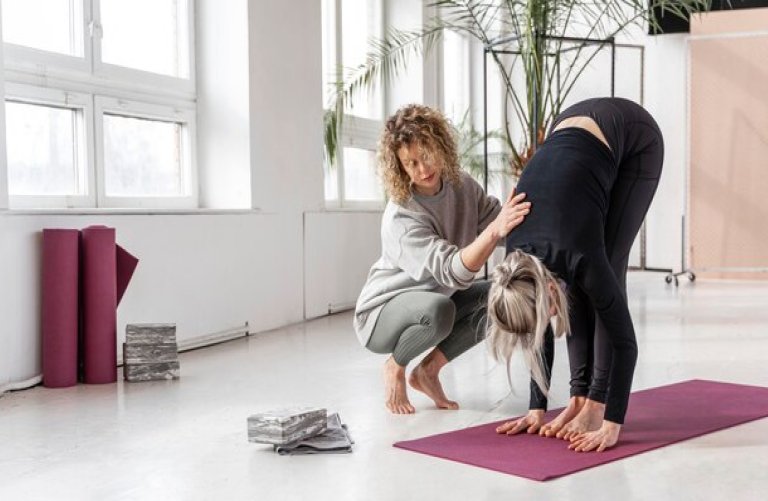Yoga, an ancient practice originating in India, has transcended cultures and generations to become a globally celebrated discipline. Renowned for its holistic benefits encompassing physical, mental, and spiritual wellness, yoga is accessible to individuals of all ages and fitness levels. For beginners, the journey into yoga can be both exciting and daunting. This comprehensive guide offers practical advice, introduces basic poses, and highlights common pitfalls to help you embark on your yoga journey with confidence.
Understanding Yoga: A Brief Overview
Before diving into the practical aspects, it’s essential to understand what yoga entails. Yoga is not just a form of exercise; it’s a philosophy that integrates body, mind, and spirit. The word “yoga” itself means “union” in Sanskrit, symbolizing the connection between these elements. Practicing yoga involves physical postures (asanas), breath control (pranayama), and meditation (dhyana), all aimed at achieving balance and harmony.
Benefits of Yoga
- Physical Health: Increases flexibility, strength, and balance; improves posture; alleviates pain.
- Mental Health: Reduces stress, anxiety, and depression; enhances mood and emotional well-being.
- Spiritual Growth: Promotes self-awareness, mindfulness, and a deeper connection with oneself and the universe.

Essential Tips for Beginners
Find the Right Style of Yoga
Yoga encompasses various styles, each with its unique focus and intensity. As a beginner, exploring different types can help you find what resonates with you.
- Hatha Yoga: A gentle introduction to the most basic yoga postures.
- Vinyasa Yoga: Focuses on flow and movement with breath, ideal for those who enjoy a dynamic practice.
- Ashtanga Yoga: A rigorous style that follows a specific sequence of postures.
- Iyengar Yoga: Emphasizes precision and alignment, often using props.
- Restorative Yoga: Focuses on relaxation and stress relief, using props to support the body.
Choose a Comfortable Space
Create a serene environment for your practice. Whether at home or in a studio, ensure your space is quiet, clean, and free from distractions. A yoga mat, comfortable clothing, and access to props like blocks, straps, and blankets can enhance your experience.
Start with Beginner-Friendly Classes
Attending beginner yoga classes, either in person or online, can provide structure and guidance. Qualified instructors can offer modifications and adjustments to ensure you practice safely and effectively.
Listen to Your Body
Yoga is a personal journey, and it’s crucial to honor your body’s limits. Avoid pushing yourself too hard, and focus on gradual progress. Remember, it’s not about achieving the perfect pose but about enjoying the process and reaping the benefits.
Basic Yoga Poses for Beginners
Starting with fundamental poses helps build a solid foundation. Here are some beginner-friendly asanas to incorporate into your practice:
1. Mountain Pose (Tadasana)
How to Do It:
Stand with feet together, arms at your sides, weight evenly distributed. Engage your thighs, lift your chest, and lengthen through the spine.
Benefits:
Improves posture, balance, and grounding.
2. Downward-Facing Dog (Adho Mukha Svanasana)
How to Do It:
Start on your hands and knees, lift your hips up and back, forming an inverted V-shape. Keep your hands shoulder-width apart and feet hip-width apart.
Benefits:
Stretches the entire body, strengthens arms and legs, and relieves tension.
3. Child’s Pose (Balasana)
How to Do It:
Kneel on the mat, sit back on your heels, and fold forward, resting your forehead on the mat with arms extended or by your sides.
Benefits:
Calms the mind, relieves stress, and gently stretches the back and hips.
4. Cobra Pose (Bhujangasana)
How to Do It:
Lie face down, place hands under your shoulders, and lift your chest while keeping elbows close to your body.
Benefits:
Strengthens the spine, opens the chest, and improves flexibility.
5. Warrior I (Virabhadrasana I)
How to Do It:
Step one foot forward, bend the front knee, and extend your arms overhead. Ensure your hips face forward.
Benefits:
Strengthens legs, opens hips, and improves focus.
6. Warrior II (Virabhadrasana II)
How to Do It:
Step one foot back, bend the front knee, and extend your arms parallel to the floor, gazing over the front hand.
Benefits:
Increases stamina, stretches legs and groins, and enhances concentration.
7. Tree Pose (Vrksasana)
How to Do It:
Stand on one leg, place the sole of the opposite foot on the inner thigh or calf, and bring hands together at the chest.
Benefits:
Improves balance, strengthens legs, and promotes mental focus.
8. Seated Forward Bend (Paschimottanasana)
How to Do It:
Sit with legs extended, hinge at the hips, and reach for your feet while keeping your spine long.
Benefits:
Stretches the hamstrings, spine, and shoulders; calms the mind.
Common Pitfalls and How to Avoid Them
1. Comparing Yourself to Others
Yoga is an individual practice, and everyone’s journey is unique. Avoid comparing your progress or abilities to others. Focus on your own growth and enjoy the personal benefits of your practice.
2. Ignoring Pain
Discomfort and stretching sensations are normal, but sharp pain is a sign to stop and reassess your pose. Ignoring pain can lead to injuries. Always listen to your body and modify poses as needed.
3. Holding Your Breath
Breath is integral to yoga. Beginners often hold their breath, especially during challenging poses. Remember to breathe deeply and evenly, coordinating your movements with your breath.
4. Rushing Through Poses
Yoga is not about how quickly you can move from one pose to another. Take your time to enter, hold, and exit each pose mindfully. This approach enhances the benefits and reduces the risk of injury.
5. Skipping Warm-Up and Cool-Down
Warm-up prepares your body for the practice, while cool-down helps in recovery. Skipping these can lead to strains and discomfort. Start with gentle stretches and end with relaxation poses like Savasana.
Incorporating Yoga into Your Daily Routine
1. Set Realistic Goals
Start with short, manageable sessions, gradually increasing the duration and intensity. Consistency is more important than long, sporadic practices.
2. Create a Routine
Incorporate yoga into your daily schedule. Whether it’s a morning session to energize your day or an evening practice to unwind, find a time that works for you and stick to it.
3. Use Resources
There are numerous resources available, from online videos and apps to books and yoga communities. These can provide guidance, inspiration, and support as you progress. One of the best mobile apps available for yoga is My Yogi app which allows you to interact with the best yogis in town.
4. Stay Patient and Positive
Yoga is a lifelong journey. Celebrate small achievements and remain patient with challenges. A positive mindset enhances your practice and overall well-being.
The Role of Diet and Hydration
A balanced diet and proper hydration complement your yoga practice. Focus on whole, nutritious foods that provide energy and aid recovery. Stay hydrated, especially before and after your practice, to maintain optimal performance and health.
The Importance of Mindfulness and Meditation
Mindfulness and meditation are core components of yoga, promoting mental clarity and inner peace. Begin with simple mindfulness practices, like focusing on your breath or body sensations. Gradually incorporate meditation to deepen your mental and spiritual practice.
Joining a Yoga Community
Engaging with a yoga community can provide motivation, support, and a sense of belonging. Whether through local classes, online forums, or social media groups, connecting with like-minded individuals can enhance your yoga journey. My Yogi app allows you to interact with the yoga communities around you, download now to become a part of the yoga communities..
Conclusion
Starting yoga as a beginner can be a transformative experience, opening doors to improved physical health, mental clarity, and spiritual growth. By following the tips and advice provided in this guide, embracing basic poses, and avoiding common pitfalls, you can cultivate a safe, enjoyable, and rewarding yoga practice. Remember, yoga is not just about the destination but the journey. So, unroll your mat, breathe deeply, and embark on this beautiful path with an open heart and mind.
Explore the My Yogi App
For further guidance and personalized yoga experiences, consider exploring the My Yogi app. Whether you’re a beginner or a seasoned practitioner, My Yogi offers tailored programs, expert-led classes, and a supportive community to help you deepen your practice. Download My Yogi app today and take the next step in your yoga journey.





